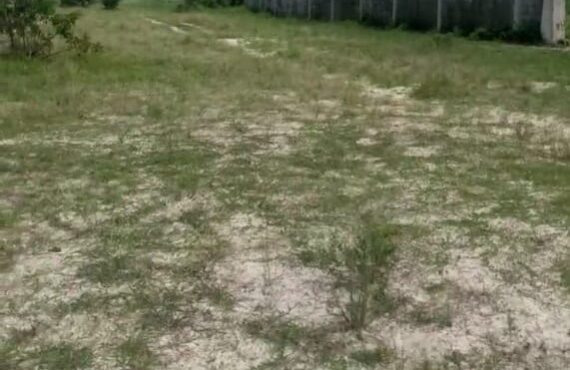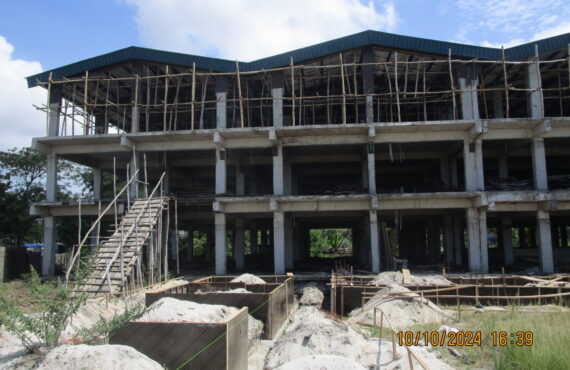
Landscaping is an essential aspect of any property. Whether you’re a landowner or an investor, enhancing the aesthetics and value of your property is crucial. Beautiful landscaping can be a selling point for potential buyers, tenants, and investors. In this article, we’ll discuss some top landscaping ideas that you can consider for your property.
1. Design with Purpose
Designing with purpose is essential for creating a landscape that meets your needs and enhances your property’s value. To achieve this, you need to have a clear understanding of the activities and functions that you want your outdoor space to serve.
Start by making a list of the activities and functions you want your outdoor space to provide. Consider your lifestyle and interests, as well as those of your family and guests. Do you want a space for outdoor dining and entertaining, a play area for children, or a garden for growing fresh produce?

Once you have a clear idea of your goals, you can begin designing your landscape with purpose. This involves creating zones or areas within your outdoor space that serve different functions. For example, you might create a dining area with a patio or deck, a play area with a swing set or sandbox, and a garden area with raised beds or a greenhouse.
It’s important to consider the flow and connectivity of your outdoor space as well. Ensure that your landscape design allows for easy movement between the different zones and areas. You may want to incorporate paths, walkways, or stepping stones to connect different areas and create a cohesive design.
When designing with purpose, it’s also important to consider the local climate, soil conditions, and maintenance requirements of your landscape. Choose plants and materials that can withstand the local conditions and require minimal upkeep. This will ensure that your outdoor space remains beautiful and functional for years to come.
Finally, consider consulting with a professional landscaper to help you design your landscape with purpose. A professional can provide expert advice on design elements, plant selection, and overall layout to ensure that your outdoor space meets your goals and enhances your property’s value.
2. Choose Low-Maintenance Plants
When selecting plants for your landscaping project, consider choosing low-maintenance options. Native plants are a great option because they require less water and maintenance than non-native plants. Additionally, they are more resistant to pests and diseases.
When selecting plants, also consider the climate and soil conditions in your area. Choose plants that thrive in your region, so they are more likely to survive and flourish. Choosing low-maintenance plants can save you time and money in the long run, and ensure that your landscape looks beautiful and healthy year-round.
3. Add Color and Texture
Adding color and texture to your landscape design can make your property stand out. Use different plant varieties to create a colorful and vibrant outdoor space. Use different textures such as shrubs, trees, and flowers to add depth and visual interest to your landscape.
When selecting plants, consider the color of their flowers or leaves. Choose plants with contrasting colors to create a visually stunning landscape. Additionally, use plants with different textures to add interest and variety to your design. For example, mix different shrubs, trees, and flowers to create a dynamic and visually appealing outdoor space.
4. Use Hardscaping
Hardscaping refers to the use of non-plant materials in your landscape design. It can include rocks, stones, pavers, and other materials. Hardscaping can help create defined outdoor spaces and provide contrast to your landscape. For example, consider adding a flagstone walkway or a retaining wall made of stone to create a focal point in your landscape.
When using hardscaping, consider the style and materials of your property. Choose materials that complement your property’s architecture and design. Additionally, use hardscaping to create defined outdoor spaces, such as a seating area or a fire pit, to enhance your property’s functionality.
5. Create an Outdoor Living Space
An outdoor living space can be a great addition to your property. It can include a patio, deck, or outdoor kitchen. Creating an outdoor living space allows you to enjoy your outdoor space, entertain guests, and add value to your property. When designing your outdoor living space, consider factors such as size, layout, and materials.
To start, consider the size of your property and the amount of outdoor space you have available. Then, design your outdoor living space to fit your needs and style. Choose materials that complement your property’s architecture and design, such as wood or stone. Additionally, consider adding features such as a grill or refrigerator to enhance your outdoor living space’s functionality.
6. Use Lighting
Outdoor lighting can enhance the safety and aesthetics of your outdoor space. It can highlight your landscaping and create a welcoming environment for your guests. When selecting lighting, consider the size and layout of your outdoor space. Choose lighting that complements your landscape design and adds to the ambiance of your property.
There are many different types of outdoor lighting to choose from, such as string lights, path lights, and spotlights. String lights are a great option for creating a warm and inviting atmosphere, while path lights can guide guests through your outdoor space. Spotlights can be used to highlight specific features in your landscape, such as trees or sculptures.
7. Incorporate Water Features
Water features can add a relaxing and peaceful element to your outdoor space. Consider incorporating a fountain, pond, or waterfall in your landscape design. Water features can also attract wildlife and add to the natural beauty of your property.
When incorporating water features, consider the size and style of your property. Choose a feature that complements your property’s architecture and design. Additionally, consider the maintenance and upkeep required for your water feature. Regular maintenance is necessary to ensure that your feature remains clean and functional.
8. Add Privacy
Privacy is an important aspect of any outdoor space. Adding privacy elements can make your outdoor space feel more intimate and peaceful. Consider using plants, walls, or fences to create a private outdoor space.
When adding privacy elements, consider the style and materials of your property. Choose materials that complement your property’s design and architecture. Additionally, consider the height and placement of your privacy elements. Ensure that they provide the necessary privacy without obstructing the view or natural light.
9. Consider the Environment
When planning your landscape design, it’s important to consider the environment. Choose plants and materials that are sustainable and environmentally friendly. For example, consider using rainwater collection systems to water your plants or using recycled materials in your hardscaping.
Additionally, consider the impact of your landscaping on the local ecosystem. Avoid using pesticides and chemicals that can harm local wildlife and plants. Plant native species that can provide food and shelter for local wildlife.
10. Hire a Professional
If you’re not confident in your landscaping skills or don’t have the time to dedicate to a landscaping project, consider hiring a professional. A professional landscaper can help you design and execute your landscaping vision. They can also ensure that your landscape is installed correctly and maintained properly.
When hiring a professional, consider their experience, qualifications, and references. Look for someone who has experience with similar projects and has a portfolio of completed work. Additionally, ensure that they have the necessary certifications and licenses to work in your area.
Check out our Asaba Estate ( IMPERIAL GARDEN ESTATE)

In conclusion, Landscaping can enhance the beauty and value of your property. By incorporating these top landscaping ideas, you can create a stunning outdoor space that meets your needs and enhances your property’s functionality. Remember to consider your goals and purpose, choose low-maintenance plants, add color and texture, use hardscaping, create an outdoor living space, use lighting, incorporate water features, add privacy, consider the environment, and hire a professional if necessary. With these tips, you can transform your outdoor space into a beautiful and functional oasis.







